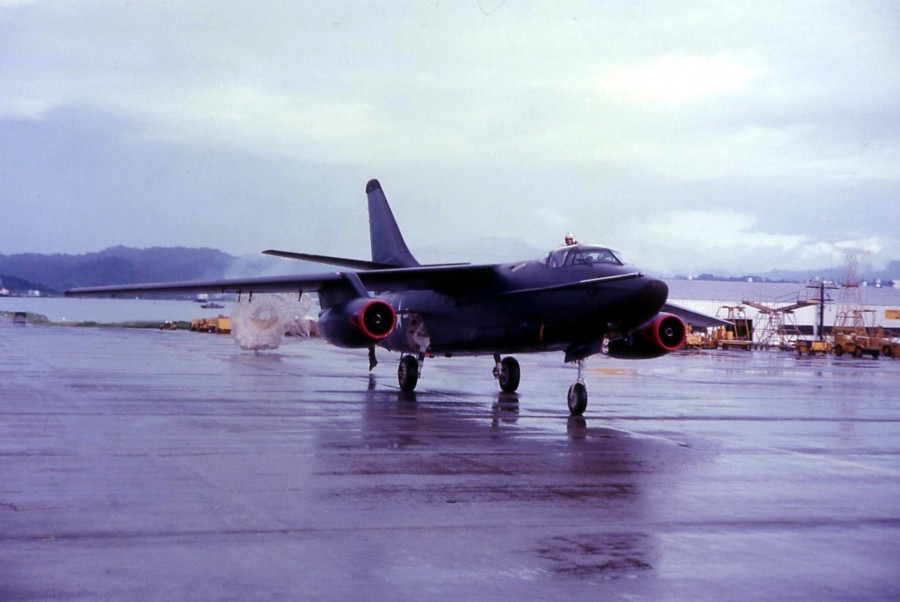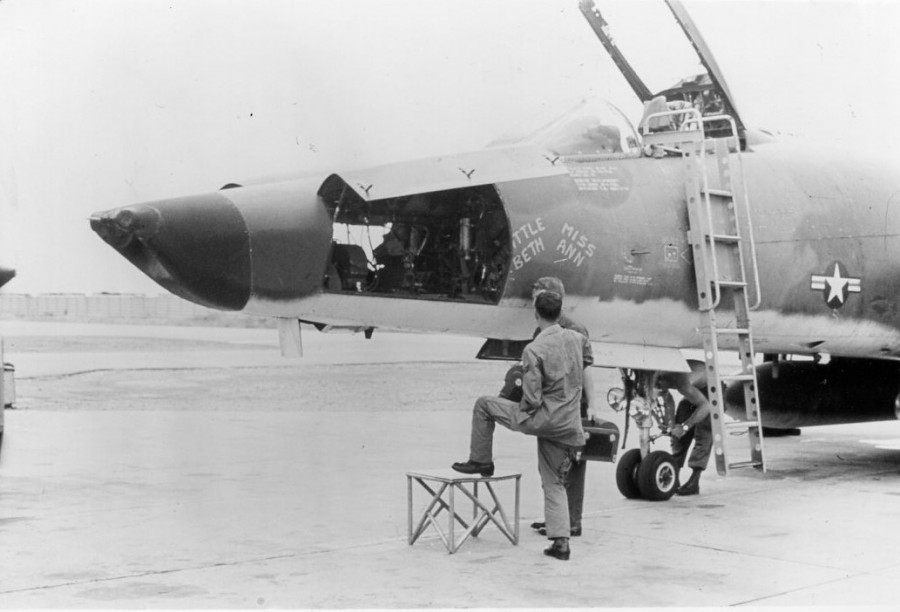Photo Gallery
Hover over the main picture to pause the slide show, or use the controls at the upper right of the main window. Scroll down to choose another picture for the main window. Click on the main image to open a different style slide show with the same images.
-
AC-119 Gunship III
The AC-119 Gunship III on the ground.
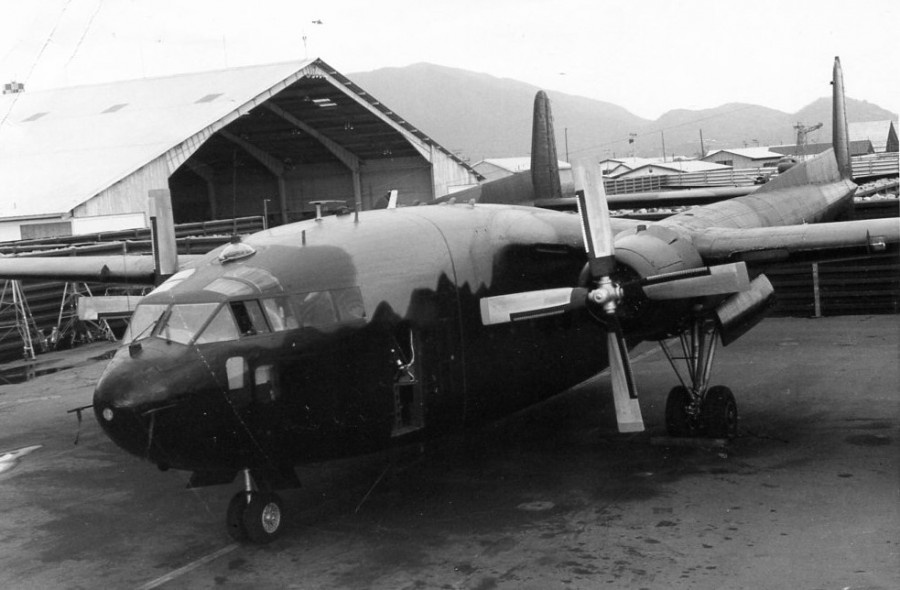
The AC-119 Gunship III on the ground.
-
AC-119 Gunship III
The AC-119 Gunship III was intended as a stop gap aircraft until the AC-130 was available in quantity. Unfortunately the AC-119G Shadow was grossly underpowered and two aircraft were lost through engine failures killing a total of 12 airmen. (USAF)
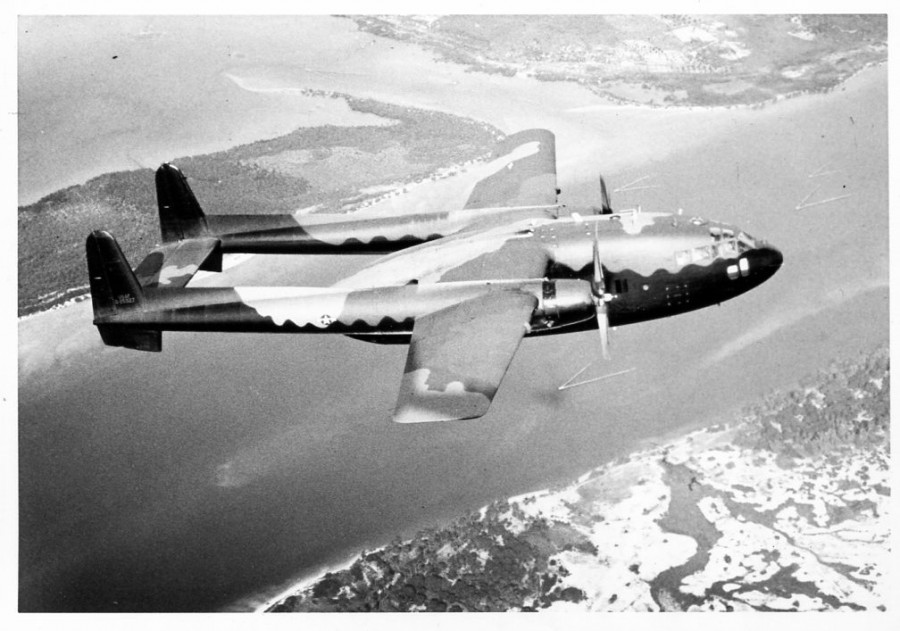
The AC-119 Gunship III was intended as a stop gap aircraft until the AC-130 was available in quantity. Unfortunately the AC-119G Shadow was grossly underpowered and two aircraft were lost through engine failures killing a total of 12 airmen. (USAF)
-
AC-130 Gunship II
The AC-130 Gunship II gun up close.
The AC-130 Gunship II gun up close.
-
AC-130 Gunship II
The AC-130 Spectre Gunship II was one of them most successful weapons in the interdiction campaign against infiltration and resupply along the Ho Chi Minh Trail. Six AC-130s were shot down over southern Laos with the loss of a total of 52 aircrew. (USAF)
The AC-130 Spectre Gunship II was one of them most successful weapons in the interdiction campaign against infiltration and resupply along the Ho Chi Minh Trail. Six AC-130s were shot down over southern Laos with the loss of a total of 52 aircrew. (USAF)
-
AC-130 Gunship II
Most of the AC-130 gunships were painted with distinctive nose art during the war. This aircraft is AC-130A 56-0490 ‘Thor’, which was shot down on a mission near Pakse on 21 December 1972 during the Linebacker II campaign. (USAF)
Most of the AC-130 gunships were painted with distinctive nose art during the war. This aircraft is AC-130A 56-0490 ‘Thor’, which was shot down on a mission near Pakse on 21 December 1972 during the Linebacker II campaign. (USAF)
-
AC-47 Gunship I
The AC-47D Spooky gunship was greatly feared by the Viet Cong. On many occasions these aircraft saved remote outposts from being overrun during night attacks. However, there was a price to pay and on the night of 28 March 1967 Spooky 44-76534 of the 4th ACS was shot down with the loss of all seven crewmen during the defence of an outpost near Hoi An south of Da Nang. (USAF)
The AC-47D Spooky gunship was greatly feared by the Viet Cong. On many occasions these aircraft saved remote outposts from being overrun during night attacks. However, there was a price to pay and on the night of 28 March 1967 Spooky 44-76534 of the 4th ACS was shot down with the loss of all seven crewmen during the defence of an outpost near Hoi An south of Da Nang. (USAF)
-
AC-47 Gunship I
The port side of an AC-47D Spooky gunship shows the aircraft’s three 7.62mm mini-guns which were capable of firing 6,000 rounds per minute. (USAF)
The port side of an AC-47D Spooky gunship shows the aircraft’s three 7.62mm mini-guns which were capable of firing 6,000 rounds per minute. (USAF)
-
A-1 Skyraider
In mid-1964 the USAF began to receive the first batch of two-seat ex-Navy A-1E Skyraiders to replace its B-26s and T-28s. The Skyraider proved to be one of the most successful close air support aircraft of the war. 132593 was a 602nd ACS aircraft that collided with another Skyraider during a close air support mission on 2 October 1965. (USAF)
In mid-1964 the USAF began to receive the first batch of two-seat ex-Navy A-1E Skyraiders to replace its B-26s and T-28s. The Skyraider proved to be one of the most successful close air support aircraft of the war. 132593 was a 602nd ACS aircraft that collided with another Skyraider during a close air support mission on 2 October 1965. (USAF)
-
A-1 Skyraider
The A-1 Skyraider will forever be known as Sandy to many of the participants of the war in Southeast Asia. It played a major part in the successful rescue of many downed airmen, although the price was sometimes heavy. A total of at least 42 USAF A-1s were lost during rescue missions during the war. (USAF)
The A-1 Skyraider will forever be known as Sandy to many of the participants of the war in Southeast Asia. It played a major part in the successful rescue of many downed airmen, although the price was sometimes heavy. A total of at least 42 USAF A-1s were lost during rescue missions during the war. (USAF)
-
A-1H Skyraider
Ten US Navy squadrons used the A-1H and A-1J in the light attack role during the war. This aircraft is about to be launched on an air strike from the USS Intrepid in May 1966. The Intrepid lost three Skyraiders during its 1966 war cruise. (USN)
Ten US Navy squadrons used the A-1H and A-1J in the light attack role during the war. This aircraft is about to be launched on an air strike from the USS Intrepid in May 1966. The Intrepid lost three Skyraiders during its 1966 war cruise. (USN)
-
A-26 Invader
Despite its age, the much-modified A-26A version of the Invader became one of the most successful weapons in the night interdiction war against truck traffic on the Ho Chi Minh Trail. Twelve of the 30 A-26As used in Southeast Asia were lost. (USAF)
Despite its age, the much-modified A-26A version of the Invader became one of the most successful weapons in the night interdiction war against truck traffic on the Ho Chi Minh Trail. Twelve of the 30 A-26As used in Southeast Asia were lost. (USAF)
-
A-3 Skywarrior
The ubiquitous A-3 Skywarrior was used in a variety of roles during the war including attack, reconnaissance, electronic warfare and as a tanker. Only 20 A-3s were lost during the war, most of them in accidents. (USN)
The ubiquitous A-3 Skywarrior was used in a variety of roles during the war including attack, reconnaissance, electronic warfare and as a tanker. Only 20 A-3s were lost during the war, most of them in accidents. (USN)
-
A-37 Dragonfly
A-37 Dragonfly in formation.
A-37 Dragonfly in formation.
-
A-37 Dragonfly
Checking out an A-37 Dragonfly.
Checking out an A-37 Dragonfly.
-
A-37 Dragonfly
Dropping bombs from an A-37 Dragonfly.
Dropping bombs from an A-37 Dragonfly.
-
A-37 Dragonfly
The Cessna A-37 Dragonfly light attack aircraft was a modified version of the T-37 trainer and, despite its short range and poor performance compared to larger jets, acquitted itself well from 1967 to the end of the war. 2Lt D H Whitehill was killed in A-37A 67-14527 of the 604th ACS when it crashed during an escort mission on 23 May 1968. (USAF)
The Cessna A-37 Dragonfly light attack aircraft was a modified version of the T-37 trainer and, despite its short range and poor performance compared to larger jets, acquitted itself well from 1967 to the end of the war. 2Lt D H Whitehill was killed in A-37A 67-14527 of the 604th ACS when it crashed during an escort mission on 23 May 1968. (USAF)
-
A-3 Skywarrior
By the late 1960s the only Skywarriors left in service were tankers, reconnaissance, and electronic warfare aircraft. This KA-3B of VAQ-130 was photographed in August 1969 while operating from the USS Franklin D Roosevelt.
By the late 1960s the only Skywarriors left in service were tankers, reconnaissance, and electronic warfare aircraft. This KA-3B of VAQ-130 was photographed in August 1969 while operating from the USS Franklin D Roosevelt.
-
A-4 Skyhawk
An A-4C Skyhawk of VA-144 prepares to be catapulted off the USS Kitty Hawk in March 1967. The Skyhawk was the Navy’s primary light attack aircraft in the early years of the war and a total of 271 Skyhawks were lost, more than any other Navy type. (USN)
An A-4C Skyhawk of VA-144 prepares to be catapulted off the USS Kitty Hawk in March 1967. The Skyhawk was the Navy’s primary light attack aircraft in the early years of the war and a total of 271 Skyhawks were lost, more than any other Navy type. (USN)
-
A-4E Skyhawk
An A-4E Skyhawk of VA-23 from the USS Midway attacks Viet Cong positions in October 1965. VA-23 lost four aircraft and three pilots during its 1965 cruise on board the Midway. (USN)
An A-4E Skyhawk of VA-23 from the USS Midway attacks Viet Cong positions in October 1965. VA-23 lost four aircraft and three pilots during its 1965 cruise on board the Midway. (USN)
-
A-6 Intruder
The A-6 Intruder built up an enviable reputation for its superb capability in all-weather, low-level strike missions. The aircraft’s bomb-carrying capacity was most impressive but its advanced avionics were unreliable in the early days. (USN)
The A-6 Intruder built up an enviable reputation for its superb capability in all-weather, low-level strike missions. The aircraft’s bomb-carrying capacity was most impressive but its advanced avionics were unreliable in the early days. (USN)
-
A-7 Corsair II
In 1968 the A-7 Corsair II began to replace the A-4 Skyhawk as the Navy’s main light attack aircraft. Despite suffering serious engine problems, the A-7 was a fine combat aircraft and was often tasked with Iron Hand missions. This A-7A of VA-147 is about to be catapulted off the USS Ranger in January 1968 with an RA-5C Vigilante of RVAH-6 taxying up to the other catapult. (USN)
In 1968 the A-7 Corsair II began to replace the A-4 Skyhawk as the Navy’s main light attack aircraft. Despite suffering serious engine problems, the A-7 was a fine combat aircraft and was often tasked with Iron Hand missions. This A-7A of VA-147 is about to be catapulted off the USS Ranger in January 1968 with an RA-5C Vigilante of RVAH-6 taxying up to the other catapult. (USN)
-
A-7E Corsair II
An A-7E Corsair II of VA-27 is launched from the catapult of the USS Enterprise. The A-7E was greatly improved over the earlier versions of the Corsair and the type was often used in the Iron Hand role. (USN)
An A-7E Corsair II of VA-27 is launched from the catapult of the USS Enterprise. The A-7E was greatly improved over the earlier versions of the Corsair and the type was often used in the Iron Hand role. (USN)
-
B-52 Stratofortress
B-52Gs and B-52Ds take off from Andersen AFB on Guam to fly Linebacker II missions over North Vietnam, some of them lasting as long as 18 hours. (USAF)
B-52Gs and B-52Ds take off from Andersen AFB on Guam to fly Linebacker II missions over North Vietnam, some of them lasting as long as 18 hours. (USAF)
-
B-52 Stratofortress
During the Linebacker II offensive the B-52s from Andersen and U-Tapao completed a total of 729 out of 741 planned sorties for the loss of 15 aircraft. The huge base at Andersen contributed 396 of these sorties and sustained eight of the losses. (USAF)
During the Linebacker II offensive the B-52s from Andersen and U-Tapao completed a total of 729 out of 741 planned sorties for the loss of 15 aircraft. The huge base at Andersen contributed 396 of these sorties and sustained eight of the losses. (USAF)
-
B-57 Canberra
The B-57 Canberra was the first jet attack aircraft to be based in South Vietnam. Unfortunately, the type was the subject of two major ground incidents in November 1964 and May 1965 involving the loss of 15 aircraft. 52-1592 was damaged on 25 March 1968 during a mission in southern Laos and crashed with the loss of both crewmembers while trying to make an emergency landing at Da Nang. (USAF)
The B-57 Canberra was the first jet attack aircraft to be based in South Vietnam. Unfortunately, the type was the subject of two major ground incidents in November 1964 and May 1965 involving the loss of 15 aircraft. 52-1592 was damaged on 25 March 1968 during a mission in southern Laos and crashed with the loss of both crewmembers while trying to make an emergency landing at Da Nang. (USAF)
-
USS Enterprise
A Phantom and an Intruder prepare for launch.
A Phantom and an Intruder prepare for launch.
-
Cam Ranh Bay
In 1970 the sprawling US air base at Cam Ranh Bay housed the USAF’s 12th TFW and 483rd TAW as well as detachments of C-130s and Navy P-3 Orions. Its proximity to local villages (My Ca at lower left) illustrate the problems faced by air base security forces, although Cam Ranh Bay itself fared much better than some other bases in this respect. (USN)
In 1970 the sprawling US air base at Cam Ranh Bay housed the USAF’s 12th TFW and 483rd TAW as well as detachments of C-130s and Navy P-3 Orions. Its proximity to local villages (My Ca at lower left) illustrate the problems faced by air base security forces, although Cam Ranh Bay itself fared much better than some other bases in this respect. (USN)
-
C-123 Provider
The first American fixed-wing aircraft lost in South Vietnam was a Ranch Hand C-123 Provider spray aircraft that crashed on 2 February 1962. Eight Ranch Hand C-123s were lost during the war as they pursued a highly controversial defoliation programme. (USAF)
The first American fixed-wing aircraft lost in South Vietnam was a Ranch Hand C-123 Provider spray aircraft that crashed on 2 February 1962. Eight Ranch Hand C-123s were lost during the war as they pursued a highly controversial defoliation programme. (USAF)
-
C-123 Provider
The C-123 Provider was the most widely-used tactical transport aircraft in Southeast Asia in the early years of the war. A total of 54 aircraft were lost between February 1962 and March 1971. (USAF)
The C-123 Provider was the most widely-used tactical transport aircraft in Southeast Asia in the early years of the war. A total of 54 aircraft were lost between February 1962 and March 1971. (USAF)
-
C-123K Provider Crash
C-123K Provider crash at Vinh Long due to a malfunction during reverse prop operation. All of the crew survived. (photo 1 of 4)
C-123K Provider crash at Vinh Long due to a malfunction during reverse prop operation. All of the crew survived. (photo 1 of 4)
-
C-123K Provider Crash
C-123K Provider crash at Vinh Long due to a malfunction during reverse prop operation. All of the crew survived. (photo 2 of 4)
C-123K Provider crash at Vinh Long due to a malfunction during reverse prop operation. All of the crew survived. (photo 2 of 4)
-
C-123K Provider Crash
C-123K Provider crash at Vinh Long due to a malfunction during reverse prop operation. All of the crew survived. (photo 3 of 4)
C-123K Provider crash at Vinh Long due to a malfunction during reverse prop operation. All of the crew survived. (photo 3 of 4)
-
C-123K Provider Crash
C-123K Provider crash at Vinh Long due to a malfunction during reverse prop operation. All of the crew survived. (photo 4 of 4)
C-123K Provider crash at Vinh Long due to a malfunction during reverse prop operation. All of the crew survived. (photo 4 of 4)
-
C-130 Hercules
The C-130 Hercules was, along with the C-123 Provider, the USAF’s main tactical transport aircraft of the war. A total of 58 airlift C-130s were lost during the war, including flareships and Special Operations models. Eight USAF C-130s were lost in 1966. (USAF)
The C-130 Hercules was, along with the C-123 Provider, the USAF’s main tactical transport aircraft of the war. A total of 58 airlift C-130s were lost during the war, including flareships and Special Operations models. Eight USAF C-130s were lost in 1966. (USAF)
-
C-141 Starlifter
In a tragic coincidence the only C-141 Starlifter strategic transports to be destroyed in Southeast Asia were lost within three weeks of each other in 1967. Despite problems of air base vulnerability, strategic transports regularly flew into major bases such as Da Nang, Tan Son Nhut, Cam Ranh Bay and Pleiku. (USAF)
In a tragic coincidence the only C-141 Starlifter strategic transports to be destroyed in Southeast Asia were lost within three weeks of each other in 1967. Despite problems of air base vulnerability, strategic transports regularly flew into major bases such as Da Nang, Tan Son Nhut, Cam Ranh Bay and Pleiku. (USAF)
-
C-47 Skytrain
The elderly C-47 Skytrain was used in a number of roles in Southeast Asia including psychological warfare as a leaflet bomber. Millions of leaflets were dropped to VC and NVA troops encouraging them to defect. Only two C-47 leaflet aircraft were lost during the war, one of them on 11 November 1966. (USAF)
The elderly C-47 Skytrain was used in a number of roles in Southeast Asia including psychological warfare as a leaflet bomber. Millions of leaflets were dropped to VC and NVA troops encouraging them to defect. Only two C-47 leaflet aircraft were lost during the war, one of them on 11 November 1966. (USAF)
-
C-7 Caribou
A C-7 Caribou landing on a field under repair.
A C-7 Caribou landing on a field under repair.
-
C-7 Caribou
On 1 January 1967 the US Army handed over its entire inventory of C-7 Caribous to the USAF when six squadrons were formed on that date in South Vietnam. The Caribou made a name for itself in the often difficult and dangerous resupply of remote Special Forces camps such as Dak Seang and Ben Het. (USAF)
On 1 January 1967 the US Army handed over its entire inventory of C-7 Caribous to the USAF when six squadrons were formed on that date in South Vietnam. The Caribou made a name for itself in the often difficult and dangerous resupply of remote Special Forces camps such as Dak Seang and Ben Het. (USAF)
-
C-7 Caribou
Caribous of the 483rd TAW take off from a South Vietnamese airfield that is under attack from Viet Cong. The Air Force lost twenty of the rugged Caribous during the war, three of them during the siege of the Special Forces camp at Dak Seang in April 1970. (USAF)
Caribous of the 483rd TAW take off from a South Vietnamese airfield that is under attack from Viet Cong. The Air Force lost twenty of the rugged Caribous during the war, three of them during the siege of the Special Forces camp at Dak Seang in April 1970. (USAF)
-
EB-66 Destroyer
The EB-66 electronic warfare aircraft provided jamming support and collected electronic intelligence for much of the war, often in the highly dangerous skies of North Vietnam. However, the EB-66 is probably best remembered for being the aircraft involved in the Bat 21 saga of April 1972. A total of 14 EB-66s were lost in the war, four of them shot down by SAMs. (USAF)
The EB-66 electronic warfare aircraft provided jamming support and collected electronic intelligence for much of the war, often in the highly dangerous skies of North Vietnam. However, the EB-66 is probably best remembered for being the aircraft involved in the Bat 21 saga of April 1972. A total of 14 EB-66s were lost in the war, four of them shot down by SAMs. (USAF)
-
EC-47 Skytrain
A total of 12 EC-47 electronic intelligence aircraft were lost during the war. Their role was to detect and locate enemy radio transmissions in an attempt to track enemy movement, particularly along the Ho Chi Minh Trail in Laos and South Vietnam. 43-48947 was later transferred to the VNAF. (USAF)
A total of 12 EC-47 electronic intelligence aircraft were lost during the war. Their role was to detect and locate enemy radio transmissions in an attempt to track enemy movement, particularly along the Ho Chi Minh Trail in Laos and South Vietnam. 43-48947 was later transferred to the VNAF. (USAF)
-
E-2 Hawkeye
The E-2 Hawkeye AEW aircraft flew its first missions over the Gulf of Tonkin in November 1965 but it did not replace the elderly E-1B Tracer completely until after the end of the war. Two E-2s were lost in accidents during the war resulting in the deaths of 10 men. (USN)
The E-2 Hawkeye AEW aircraft flew its first missions over the Gulf of Tonkin in November 1965 but it did not replace the elderly E-1B Tracer completely until after the end of the war. Two E-2s were lost in accidents during the war resulting in the deaths of 10 men. (USN)
-
F-4B from VF-11
An F-4B Phantom of VF-11 flies over USS Forrestal shortly before the disastrous fire that brought an abrupt end to the ship's one and only tour of duty off Vietnam. (USN)
An F-4B Phantom of VF-11 flies over USS Forrestal shortly before the disastrous fire that brought an abrupt end to the ship's one and only tour of duty off Vietnam. (USN)
-
F-100 Super Sabre
An F-100 Super Sabre maneuvering hard.
An F-100 Super Sabre maneuvering hard.
-
F-100 Super Sabre
The F-100 Super Sabres did journeyman duties throughout the war.
The F-100 Super Sabres did journeyman duties throughout the war.
-
F-100 Super Sabre
1Lt V H Thompson was killed in this F-100D 56-3277 on 15 March 1967 during an attack on a Viet Cong base camp near the mouth of the Cua Soirap River, 20 miles south of Saigon. On average three Super Sabres were lost every month during 1967. (USAF)
1Lt V H Thompson was killed in this F-100D 56-3277 on 15 March 1967 during an attack on a Viet Cong base camp near the mouth of the Cua Soirap River, 20 miles south of Saigon. On average three Super Sabres were lost every month during 1967. (USAF)
-
F-100 Super Sabre
The 481st TFS was one of several F-100 squadrons that deployed to Southeast Asia on temporary duty before Wings were permanently assigned. This F-100F sitting in the dark at Tan Son Nhut in October 1965 remained in South Vietnam after the 481st TFS returned to the USA in November 1965 and was destroyed during a VC attack on Bien Hoa on 17 February 1968. (USAF)
The 481st TFS was one of several F-100 squadrons that deployed to Southeast Asia on temporary duty before Wings were permanently assigned. This F-100F sitting in the dark at Tan Son Nhut in October 1965 remained in South Vietnam after the 481st TFS returned to the USA in November 1965 and was destroyed during a VC attack on Bien Hoa on 17 February 1968. (USAF)
-
F-100 Super Sabre
More Super Sabres were shot down in South Vietnam than any other strike aircraft. The nearest aircraft of this pair is 55-2914 that was shot down by small arms fire as it was taking off from Phan Rang on 18 June 1968 while serving with the 615th TFS. (USAF)
More Super Sabres were shot down in South Vietnam than any other strike aircraft. The nearest aircraft of this pair is 55-2914 that was shot down by small arms fire as it was taking off from Phan Rang on 18 June 1968 while serving with the 615th TFS. (USAF)
-
F-102 Delta Dagger
The F-102 Delta Dagger put in its time in Southeast Asia.
The F-102 Delta Dagger put in its time in Southeast Asia.
-
F-102 Delta Dagger
The F-102 Delta Dagger saw just over a decade of service in Southeast Asia as detachments from Clark AB and bases in Japan rotated into five bases in South Vietnam and Thailand. Only 14 F-102s were lost during the war, four of them in airbase attacks. (USAF)
The F-102 Delta Dagger saw just over a decade of service in Southeast Asia as detachments from Clark AB and bases in Japan rotated into five bases in South Vietnam and Thailand. Only 14 F-102s were lost during the war, four of them in airbase attacks. (USAF)
-
F-104 Starfighter
The deployment of the F-104C Starfighter to Southeast Asia was not a great success. Its short range and poor manoeuvrability suited it to neither the combat air patrols nor close air support missions that it performed. This photograph shows 56-0883, which was the first F-104C to be built and which was shot down by Chinese MiGs over Hainan island on 20 September 1965. (USAF)
The deployment of the F-104C Starfighter to Southeast Asia was not a great success. Its short range and poor manoeuvrability suited it to neither the combat air patrols nor close air support missions that it performed. This photograph shows 56-0883, which was the first F-104C to be built and which was shot down by Chinese MiGs over Hainan island on 20 September 1965. (USAF)
-
F-105 Thunderchief
The F-105 Thunderchief was the USAF’s main strike aircraft during the Rolling Thunder campaign during which nearly 350 F-105s were lost. All these Takhli Wing aircraft eventually survived the war and served with Air National Guard squadrons.(USAF)
The F-105 Thunderchief was the USAF’s main strike aircraft during the Rolling Thunder campaign during which nearly 350 F-105s were lost. All these Takhli Wing aircraft eventually survived the war and served with Air National Guard squadrons.(USAF)
-
F-105 Thunderchief
The F-105F Wild Weasels normally led a flight of single-seat F-105Ds, some of which carried the Shrike anti-radar missile, the Weasels’ weapon of choice in the early years. (USAF)
The F-105F Wild Weasels normally led a flight of single-seat F-105Ds, some of which carried the Shrike anti-radar missile, the Weasels’ weapon of choice in the early years. (USAF)
-
F-105 Thunderchief
An F-105D of the 354th TFS from Takhli flies over the wooded hills of Laos en route to its target with a load of 500lb and 750lb bombs. (USAF)
An F-105D of the 354th TFS from Takhli flies over the wooded hills of Laos en route to its target with a load of 500lb and 750lb bombs. (USAF)
-
F-105 Thunderchief
The F-105 Thunderchief was the USAF’s main strike aircraft during the Rolling Thunder campaign during which nearly 350 F-105s were lost. All these Takhli Wing aircraft eventually survived the war and served with Air National Guard squadrons. (USAF)
The F-105 Thunderchief was the USAF’s main strike aircraft during the Rolling Thunder campaign during which nearly 350 F-105s were lost. All these Takhli Wing aircraft eventually survived the war and served with Air National Guard squadrons. (USAF)
-
F-105 Thunderchief
Four F-105Ds from Korat’s 34th TFS return from a mission on 16 December 1968. The second aircraft from the left, 60-0505, was shot down on a POL strike in southern Laos on 18 February 1969. The pilot, Capt J M Brucher, ejected safely but, like many others, never returned from Laos alive. (USAF)
Four F-105Ds from Korat’s 34th TFS return from a mission on 16 December 1968. The second aircraft from the left, 60-0505, was shot down on a POL strike in southern Laos on 18 February 1969. The pilot, Capt J M Brucher, ejected safely but, like many others, never returned from Laos alive. (USAF)
-
F-105 Thunderchief
A total of 397 F-105s were lost in Southeast Asia representing 48 per cent of the total number of 833 Thunderchiefs constructed. However, F-105D 60-0464 survived the war having been modified to T-Stick standard. (USAF)
A total of 397 F-105s were lost in Southeast Asia representing 48 per cent of the total number of 833 Thunderchiefs constructed. However, F-105D 60-0464 survived the war having been modified to T-Stick standard. (USAF)
-
F-111 Aardvark
The General Dynamics F-111A’s introduction to combat was disastrous with the loss of three Combat Lancer detachment aircraft in less than a month. The aircraft was sent into combat before it had been fully tested and the poor results in Southeast Asia only stirred up more controversy over the F-111’s future. (USAF)
The General Dynamics F-111A’s introduction to combat was disastrous with the loss of three Combat Lancer detachment aircraft in less than a month. The aircraft was sent into combat before it had been fully tested and the poor results in Southeast Asia only stirred up more controversy over the F-111’s future. (USAF)
-
F-111 Aardvark
The F-111’s return to combat in 1972 showed the aircraft to be a most capable low-level, all-weather strike aircraft that could reach targets in conditions that grounded most other types. The HG code shows this aircraft to belong to the 347th TFW. Six aircraft were lost during the Linebacker offensives of 1972 with the loss of 10 airmen. (USAF)
The F-111’s return to combat in 1972 showed the aircraft to be a most capable low-level, all-weather strike aircraft that could reach targets in conditions that grounded most other types. The HG code shows this aircraft to belong to the 347th TFW. Six aircraft were lost during the Linebacker offensives of 1972 with the loss of 10 airmen. (USAF)
-
F-111 Aardvark
The F-111As of the 347th TFW were among some of the last USAF aircraft to leave Southeast Asia. Eleven F-111s were lost during the war. (USAF)
The F-111As of the 347th TFW were among some of the last USAF aircraft to leave Southeast Asia. Eleven F-111s were lost during the war. (USAF)
-
F-4 Phantom II
By mid-1966 most USAF tactical aircraft had been painted in the three-tone camouflage colours as dictated by TO 1-1-4. This freshly-painted F-4C is seen over South Vietnam in December 1965. (USAF)
By mid-1966 most USAF tactical aircraft had been painted in the three-tone camouflage colours as dictated by TO 1-1-4. This freshly-painted F-4C is seen over South Vietnam in December 1965. (USAF)
-
F-4B Phantom II
When the conflict in Southeast Asia was escalating in 1964 the F-4B Phantom was in the process of replacing earlier US Navy fighters with Fleet squadrons. A total of 128 F-4Bs and F-4Js were lost by the Navy during the war. (USN)
When the conflict in Southeast Asia was escalating in 1964 the F-4B Phantom was in the process of replacing earlier US Navy fighters with Fleet squadrons. A total of 128 F-4Bs and F-4Js were lost by the Navy during the war. (USN)
-
F-4D Phantom II
This F-4D carries the unique individual aircraft code letters worn by the squadrons of the 366th TFW. The system was soon discarded in favour of standardised squadron code letters. This 389th TFS aircraft survived to fly with the 48th TFW at Lakenheath, Suffolk and the 474th TFW at Nellis AFB, Nevada. (USAF)
This F-4D carries the unique individual aircraft code letters worn by the squadrons of the 366th TFW. The system was soon discarded in favour of standardised squadron code letters. This 389th TFS aircraft survived to fly with the 48th TFW at Lakenheath, Suffolk and the 474th TFW at Nellis AFB, Nevada. (USAF)
-
F-4D Phantom II
F-4D 66-8690 of the 435th TFS was shot down near the Mu Gia Pass during a Wolf FAC sortie on 28 January 1969. The aircraft had shot down a MiG-21 over North Vietnam on 12 February 1968. (USAF)
F-4D 66-8690 of the 435th TFS was shot down near the Mu Gia Pass during a Wolf FAC sortie on 28 January 1969. The aircraft had shot down a MiG-21 over North Vietnam on 12 February 1968. (USAF)
-
F-4E Phantom II
The F-4E variant of the Phantom was the first model to be fitted with an integral gun and was first deployed to Southeast Asia in November 1968. This aircraft, which later served with the 21st Composite Wing at Elmendorf AFB, Alaska, is from Korat’s 469th TFS. (USAF)
The F-4E variant of the Phantom was the first model to be fitted with an integral gun and was first deployed to Southeast Asia in November 1968. This aircraft, which later served with the 21st Composite Wing at Elmendorf AFB, Alaska, is from Korat’s 469th TFS. (USAF)
-
F-5C Freedom Fighter
Under Operation Skoshi Tiger, the 4503rd TFS introduced the F-5 to combat as a possible replacement for the F-100. Despite a successful combat trial the F-5 was not adopted by the USAF although a large number were supplied to the VNAF. (USAF)
Under Operation Skoshi Tiger, the 4503rd TFS introduced the F-5 to combat as a possible replacement for the F-100. Despite a successful combat trial the F-5 was not adopted by the USAF although a large number were supplied to the VNAF. (USAF)
-
HH-3 Jolly Green Giant
The USAF search and rescue capability was greatly enhanced by the arrival of the first CH-3C helicopters on loan from TAC in July 1965. The 3rd ARRG’s own HH-3Es arrived soon after and were responsible for many saves, often deep into enemy territory. Fourteen CH/HH-3s were lost during SAR missions during the war. (USAF)
The USAF search and rescue capability was greatly enhanced by the arrival of the first CH-3C helicopters on loan from TAC in July 1965. The 3rd ARRG’s own HH-3Es arrived soon after and were responsible for many saves, often deep into enemy territory. Fourteen CH/HH-3s were lost during SAR missions during the war. (USAF)
-
HH-43 Huskie
The Kaman HH-43 Huskie was the first USAF helicopter deployed to Southeast Asia to provide SAR coverage for downed airmen. The type was responsible for more rescues than any other helicopter and at least two Huskies were normally assigned to each US airbase throughout the war. (USAF)
The Kaman HH-43 Huskie was the first USAF helicopter deployed to Southeast Asia to provide SAR coverage for downed airmen. The type was responsible for more rescues than any other helicopter and at least two Huskies were normally assigned to each US airbase throughout the war. (USAF)
-
HH-53 Super Jolly Green Giant
The lengths to which the SAR forces would go to rescue a downed airman are illustrated by the rescue of 1Lt W J Bergeron in December 1969. A total of 366 sorties were flown during the rescue, which was finally made by an HH-53C of the 40th ARRS. (USAF)
The lengths to which the SAR forces would go to rescue a downed airman are illustrated by the rescue of 1Lt W J Bergeron in December 1969. A total of 366 sorties were flown during the rescue, which was finally made by an HH-53C of the 40th ARRS. (USAF)
-
HH-53 Super Jolly Green Giant
The most welcome sight that a downed airman could hope for was a hovering helicopter and a PJ on his way down to assist in the rescue. The HH-53 arrived in Southeast Asia in September 1967 and 10 of these huge helicopters were lost on SAR missions during the war. (USAF)
The most welcome sight that a downed airman could hope for was a hovering helicopter and a PJ on his way down to assist in the rescue. The HH-53 arrived in Southeast Asia in September 1967 and 10 of these huge helicopters were lost on SAR missions during the war. (USAF)
-
HH-53 Super Jolly Green Giant
The jungle penetrator carried by SAR helicopters was designed to penetrate through dense foliage so that the rescue cable could reach survivors on the ground. The hinged seat could be swung out for the survivor to take the ride into the hovering helicopter. The PJ often rode the seat down to the ground to assist in the rescue. (USAF)
The jungle penetrator carried by SAR helicopters was designed to penetrate through dense foliage so that the rescue cable could reach survivors on the ground. The hinged seat could be swung out for the survivor to take the ride into the hovering helicopter. The PJ often rode the seat down to the ground to assist in the rescue. (USAF)
-
HH-53 Super Jolly Green Giant
The PJ's often rode the jungle penetrators down through the canopies to affect a rescue.
The PJ's often rode the jungle penetrators down through the canopies to affect a rescue.
-
HU-16 Albatross
The HU-16B Albatross amphibian was an important part of the SAR operation in Southeast Asia and was responsible for many saves during the early years of the war. Often in great danger, two of the aircraft were lost; one disappeared in a storm and the other was blown out of the water by enemy coastal artillery. (USAF)
The HU-16B Albatross amphibian was an important part of the SAR operation in Southeast Asia and was responsible for many saves during the early years of the war. Often in great danger, two of the aircraft were lost; one disappeared in a storm and the other was blown out of the water by enemy coastal artillery. (USAF)
-
KC-135 Stratotanker
The USAF strike aircraft that fought the air war over North Vietnam relied on the KC-135 Stratotanker detachments to provide in-flight refuelling, without which much of North Vietnam would have been outside the range of aircraft based in Thailand. During the war KC-135s transferred about 1.4 billion gallons of fuel. (USAF)
The USAF strike aircraft that fought the air war over North Vietnam relied on the KC-135 Stratotanker detachments to provide in-flight refuelling, without which much of North Vietnam would have been outside the range of aircraft based in Thailand. During the war KC-135s transferred about 1.4 billion gallons of fuel. (USAF)
-
OP-2 Neptune
The highly modified OP-2E Neptunes of VO-67 were tasked with dropping electronic sensors along the Ho Chi Minh Trail in southern Laos as part of the Igloo White surveillance system. VO-67 only spent eight months in Southeast Asia before returning to the USA after the loss of three aircraft. (USN)
The highly modified OP-2E Neptunes of VO-67 were tasked with dropping electronic sensors along the Ho Chi Minh Trail in southern Laos as part of the Igloo White surveillance system. VO-67 only spent eight months in Southeast Asia before returning to the USA after the loss of three aircraft. (USN)
-
OV-10 Bronco
The OV-10A Bronco was designed specifically for counter-insurgency and forward air control in limited war scenarios. The aircraft were delivered in protective cocoons as deck cargo and offloaded at Cam Ranh Bay for flight testing before delivery to operational units. The USAF’s 67-14625 survived the war to serve with the 601st TCW at Sembach AB, Germany. (USAF)
The OV-10A Bronco was designed specifically for counter-insurgency and forward air control in limited war scenarios. The aircraft were delivered in protective cocoons as deck cargo and offloaded at Cam Ranh Bay for flight testing before delivery to operational units. The USAF’s 67-14625 survived the war to serve with the 601st TCW at Sembach AB, Germany. (USAF)
-
OV-10 Bronco
OV-10A Bronco 67-14625 is seen in action over the Mekong Delta in August 1969. The aircraft is firing smoke rockets to mark a target for the strike aircraft under its control. (USAF)
OV-10A Bronco 67-14625 is seen in action over the Mekong Delta in August 1969. The aircraft is firing smoke rockets to mark a target for the strike aircraft under its control. (USAF)
-
O-1 Bird Dog
The low, slow Bird Dog was responsible for wreaking havoc on the enemy through its ability to guide multiple flights of bomb-laden strike aircraft onto targets.
The low, slow Bird Dog was responsible for wreaking havoc on the enemy through its ability to guide multiple flights of bomb-laden strike aircraft onto targets.
-
O-1 Bird Dog
The enemy tried hard to shoot down the Bird Dogs because of the potential for calling in strikes on forces moving into the areas the FAC pilots were most familiar with.
The enemy tried hard to shoot down the Bird Dogs because of the potential for calling in strikes on forces moving into the areas the FAC pilots were most familiar with.
-
O-1 Bird Dog
The apparently insignificant little Cessna O-1 Bird Dog was one of the most important aircraft in South Vietnam. Forward air controllers flying the O-1, and later the O-2 and OV-10, controlled practically all air strikes in South Vietnam. O-1F 55-4719 of the 19th TASS crashed on 9 March 1965 during a training flight. (USAF)
The apparently insignificant little Cessna O-1 Bird Dog was one of the most important aircraft in South Vietnam. Forward air controllers flying the O-1, and later the O-2 and OV-10, controlled practically all air strikes in South Vietnam. O-1F 55-4719 of the 19th TASS crashed on 9 March 1965 during a training flight. (USAF)
-
O-1 Bird Dog
The importance of the O-1 Bird Dog to the war in South Vietnam and Laos is the fact that 469 were lost by the Army, Marines and the Air Force during the war, more than any other fixed-wing type other than the F-4 Phantom. (USAF)
The importance of the O-1 Bird Dog to the war in South Vietnam and Laos is the fact that 469 were lost by the Army, Marines and the Air Force during the war, more than any other fixed-wing type other than the F-4 Phantom. (USAF)
-
O-2 Skymaster
The Cessna O-2A began to supplement the O-1 Bird Dog as a FAC aircraft in mid-1967. Despite the O-2’s higher performance and increased armament, many pilots preferred the O-1 as it was more manoeuvrable, had better visibility and could operate from shorter airstrips. (USAF)
The Cessna O-2A began to supplement the O-1 Bird Dog as a FAC aircraft in mid-1967. Despite the O-2’s higher performance and increased armament, many pilots preferred the O-1 as it was more manoeuvrable, had better visibility and could operate from shorter airstrips. (USAF)
-
Phuc Yen
Phuc Yen Air Base after a strike and before repairs were made.
Phuc Yen Air Base after a strike and before repairs were made.
-
P-2 Neptune
Four squadrons deployed the SP-2 Neptune to Southeast Asia to take part in the Market Time surveillance campaign to reduce infiltration in to South Vietnam by sea. VP-1 sent four detachments to Tan Son Nhut and Cam Ranh Bay between October 1964 and February 1969 but the only Neptune lost during the war was a VP-42 aircraft. (USN)
Four squadrons deployed the SP-2 Neptune to Southeast Asia to take part in the Market Time surveillance campaign to reduce infiltration in to South Vietnam by sea. VP-1 sent four detachments to Tan Son Nhut and Cam Ranh Bay between October 1964 and February 1969 but the only Neptune lost during the war was a VP-42 aircraft. (USN)
-
P-3 Orion
Only two P-3 Orions were lost on Market Time operations during the war and both were lost by VP-26 within two months of each other in 1968 resulting in the deaths of 24 men. (USN)
Only two P-3 Orions were lost on Market Time operations during the war and both were lost by VP-26 within two months of each other in 1968 resulting in the deaths of 24 men. (USN)
-
QU-22 Pave Eagle
The QU-22B was one of several highly modified types designed for the collection of data from the sensors dropped as part of the Igloo White programme. The aircraft could be flown by remote control although most flights in Southeast Asia were flown by a pilot. (USAF)
The QU-22B was one of several highly modified types designed for the collection of data from the sensors dropped as part of the Igloo White programme. The aircraft could be flown by remote control although most flights in Southeast Asia were flown by a pilot. (USAF)
-
RA 3B
RA-3B (SS-901) from VAP-61 taxiing at NAS Cubi Point the day before it was lost on a night recce mission near Hon Me island off the coast of North Vietnam. The crew was from VAP-62, home ported at Guam but temporarily assigned to VAP-61. The crew was scheduled to go to Australia for R&R but opted for another mission instead. The aircraft disappeared from radar while conducting coastal recce using infrared sensors at low level. This same aircraft had been hit by AAA over North Vietnam on 15 August on a night road reconnaissance mission when operating from USS Constellation.
RA-3B (SS-901) from VAP-61 taxiing at NAS Cubi Point the day before it was lost on a night recce mission near Hon Me island off the coast of North Vietnam. The crew was from VAP-62, home ported at Guam but temporarily assigned to VAP-61. The crew was scheduled to go to Australia for R&R but opted for another mission instead. The aircraft disappeared from radar while conducting coastal recce using infrared sensors at low level. This same aircraft had been hit by AAA over North Vietnam on 15 August on a night road reconnaissance mission when operating from USS Constellation.
-
RF-101 Voodoo
The RF-101C Voodoo was the USAF’s prime photographic reconnaissance aircraft in Southeast Asia until the introduction of the RF-4C. This RF-101C 56-0176, ‘Little Miss Beth Ann’ of the 45th TRS, is about to have its cameras loaded at Tan Son Nhut for yet another mission. (USAF)
The RF-101C Voodoo was the USAF’s prime photographic reconnaissance aircraft in Southeast Asia until the introduction of the RF-4C. This RF-101C 56-0176, ‘Little Miss Beth Ann’ of the 45th TRS, is about to have its cameras loaded at Tan Son Nhut for yet another mission. (USAF)
-
RF-101 Voodoo
The RF-101C Voodoo was one of the first aircraft to be camouflaged in Southeast Asia as this example at Tan Son Nhut in December 1965 illustrates. A total of 38 RF-101Cs were lost during the war, 28 of them while on reconnaissance missions over North Vietnam. (USAF)
The RF-101C Voodoo was one of the first aircraft to be camouflaged in Southeast Asia as this example at Tan Son Nhut in December 1965 illustrates. A total of 38 RF-101Cs were lost during the war, 28 of them while on reconnaissance missions over North Vietnam. (USAF)
-
RF-101 Voodoo
The RF-101C Voodoo tactical reconnaissance aircraft was finally withdrawn from service in Southeast Asia in 1970 having been one of the first USAF aircraft to be deployed to the theatre. (USAF)
The RF-101C Voodoo tactical reconnaissance aircraft was finally withdrawn from service in Southeast Asia in 1970 having been one of the first USAF aircraft to be deployed to the theatre. (USAF)
-
RF-4C Phantom II
An RF-4C Phantom of the 12th TRS has its precious film unloaded at Tan Son Nhut after a reconnaissance sortie. The scarred radome of the aircraft illustrates the wear and tear suffered by aircraft in combat. (USAF)
An RF-4C Phantom of the 12th TRS has its precious film unloaded at Tan Son Nhut after a reconnaissance sortie. The scarred radome of the aircraft illustrates the wear and tear suffered by aircraft in combat. (USAF)
-
RF-4C Phantom II
The 14th TRS lost a total of 22 RF-4C Phantoms during its long tenure at Udorn RTAB. In all 83 RF-4Cs and 38 RF-101Cs were lost during the war illustrating the dangers of low-level tactical reconnaissance operations in a war zone. RF-4C 69-0350 was a LORAN-equipped aircraft that could be identified by a towel-rail antenna on the dorsal spine. (USAF)
The 14th TRS lost a total of 22 RF-4C Phantoms during its long tenure at Udorn RTAB. In all 83 RF-4Cs and 38 RF-101Cs were lost during the war illustrating the dangers of low-level tactical reconnaissance operations in a war zone. RF-4C 69-0350 was a LORAN-equipped aircraft that could be identified by a towel-rail antenna on the dorsal spine. (USAF)
-
RF-8 Crusader
VFP-63 provided detachments for most of the aircraft carriers operating in the Gulf of Tonkin. This RF-8G belongs to Detachment G and is seen on board the USS Oriskany in August 1967. VFP-63 lost a total of 30 Crusaders between January 1964 and the end of the conflict. (USN)
VFP-63 provided detachments for most of the aircraft carriers operating in the Gulf of Tonkin. This RF-8G belongs to Detachment G and is seen on board the USS Oriskany in August 1967. VFP-63 lost a total of 30 Crusaders between January 1964 and the end of the conflict. (USN)
-
SR-71 Blackbird
Operating from Kadena on the island of Okinawa, the SR-71A flew high-speed, high-altitude reconnaissance missions over North Vietnam from March 1968. Although largely invulnerable to enemy air defences, two of the aircraft were lost in accidents during the war. (USAF)
Operating from Kadena on the island of Okinawa, the SR-71A flew high-speed, high-altitude reconnaissance missions over North Vietnam from March 1968. Although largely invulnerable to enemy air defences, two of the aircraft were lost in accidents during the war. (USAF)
-
S-2 Tracker
Although little used in their primary anti-submarine warfare role, the S-2 Tracker squadrons played their part by flying SAR, sea surveillance and radar coverage missions. This S-2E is landing on board the USS Bennington, one of the four ASW carriers deployed to Southeast Asia during the war. (USN)
Although little used in their primary anti-submarine warfare role, the S-2 Tracker squadrons played their part by flying SAR, sea surveillance and radar coverage missions. This S-2E is landing on board the USS Bennington, one of the four ASW carriers deployed to Southeast Asia during the war. (USN)
-
T-28 Trojan
A large number of T-28 Trojans were modified to T-28D standard and supplied to the air forces of South Vietnam, Thailand, Laos and Cambodia. The USAF lost 23 T-28s during the war, mostly prior to 1965. (USAF)
A large number of T-28 Trojans were modified to T-28D standard and supplied to the air forces of South Vietnam, Thailand, Laos and Cambodia. The USAF lost 23 T-28s during the war, mostly prior to 1965. (USAF)
-
U-10 Courier
The Helio U-10 was a rugged light aircraft with an amazing STOL performance. It was used by the USAF in the psychological warfare role and by Air America for the resupply of remote camps, operating into some of the most dangerous airstrips in the world. Twelve U-10s were destroyed in the war but only four of these were lost in action. (USAF)
The Helio U-10 was a rugged light aircraft with an amazing STOL performance. It was used by the USAF in the psychological warfare role and by Air America for the resupply of remote camps, operating into some of the most dangerous airstrips in the world. Twelve U-10s were destroyed in the war but only four of these were lost in action. (USAF)
-
U-17 Skywagon
The U-17B Skywagons were used by Raven FACs. There were two lost in the war, killing all four onboard.
The U-17B Skywagons were used by Raven FACs. There were two lost in the war, killing all four onboard.
-
U-2 Dragon Lady
The Lockheed U-2 started high-altitude reconnaissance missions as early as February 1964 and continued to provide intelligence to ground and air forces for the duration of the war. Operating initially from Bien Hoa, the U-2 detachment moved in July 1970 to U-Tapao, where this photograph was taken. (USAF)
The Lockheed U-2 started high-altitude reconnaissance missions as early as February 1964 and continued to provide intelligence to ground and air forces for the duration of the war. Operating initially from Bien Hoa, the U-2 detachment moved in July 1970 to U-Tapao, where this photograph was taken. (USAF)
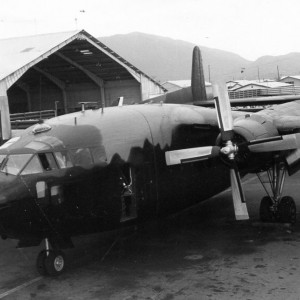
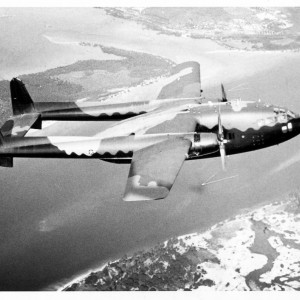
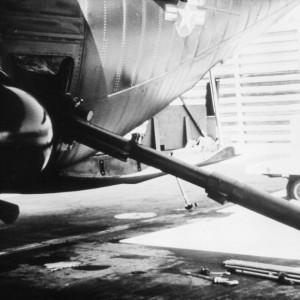
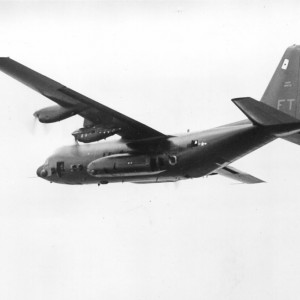
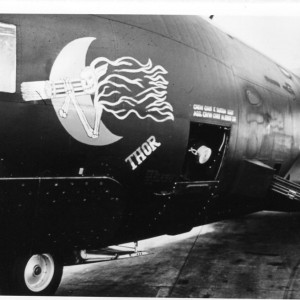
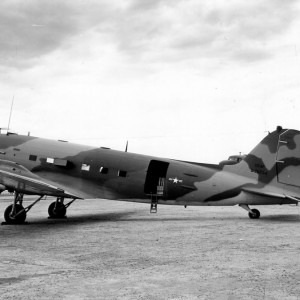
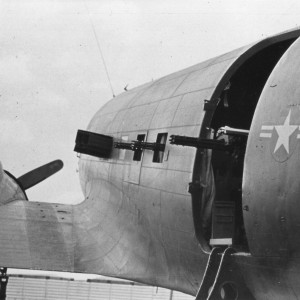
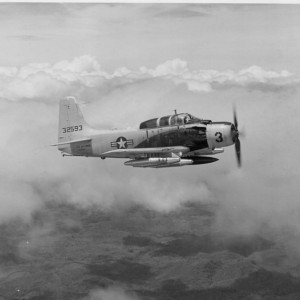
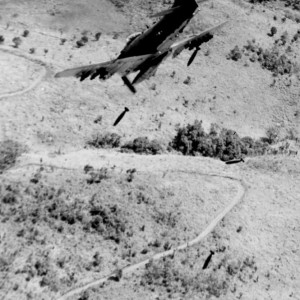
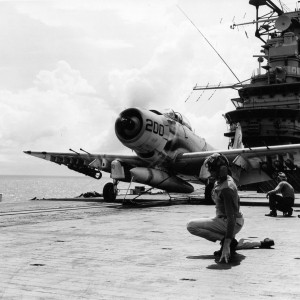
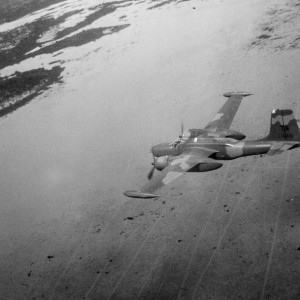
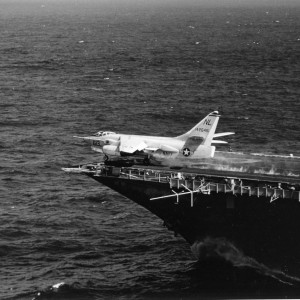
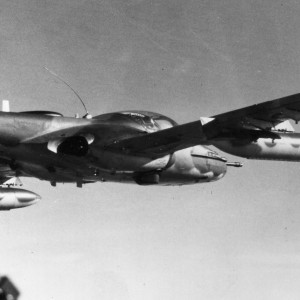
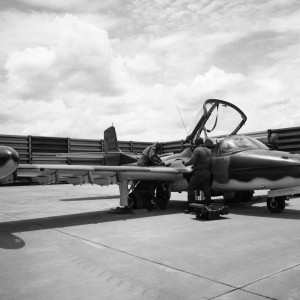
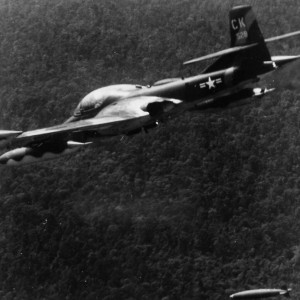
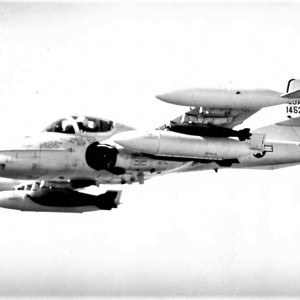
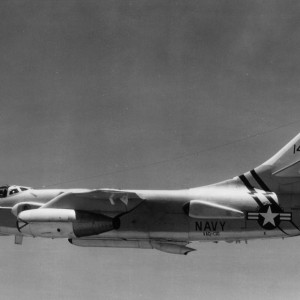
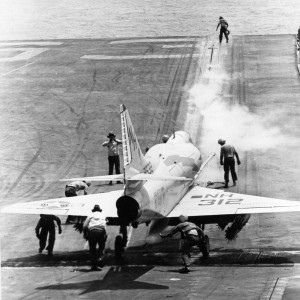
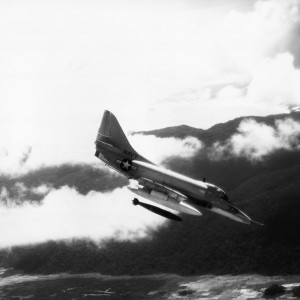
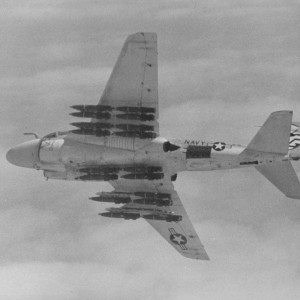
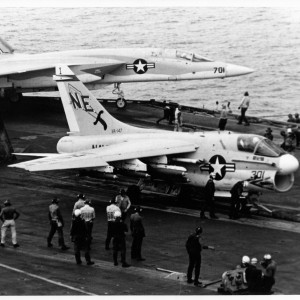
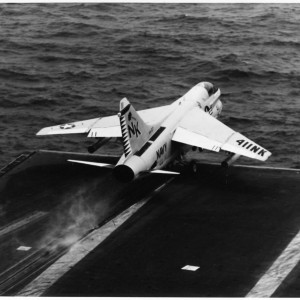
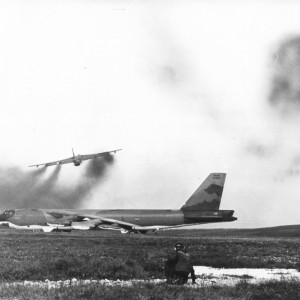
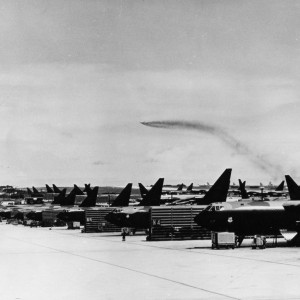
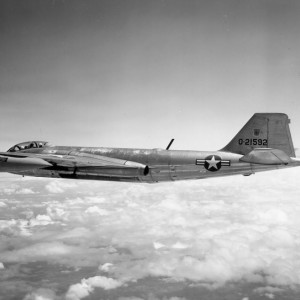
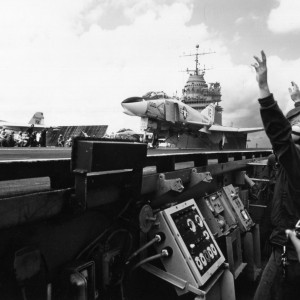
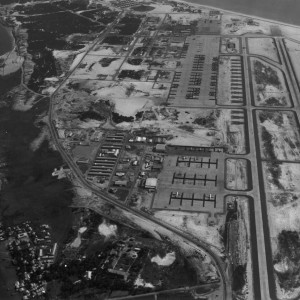
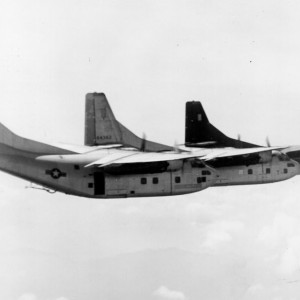
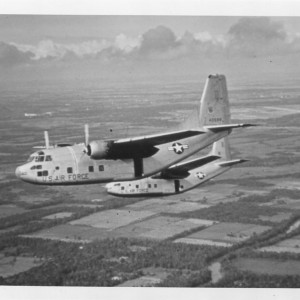
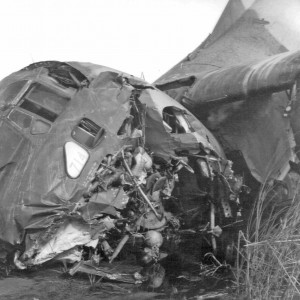
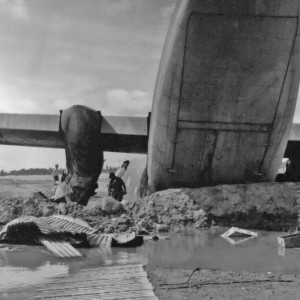
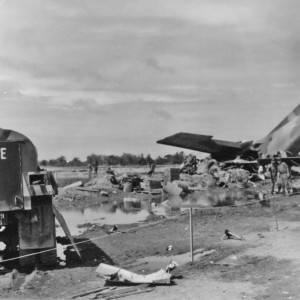
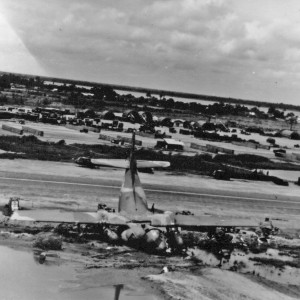
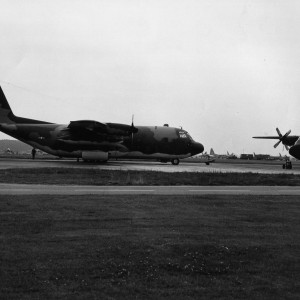
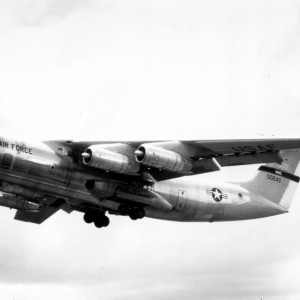
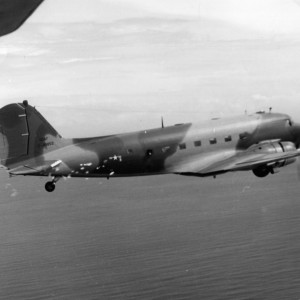
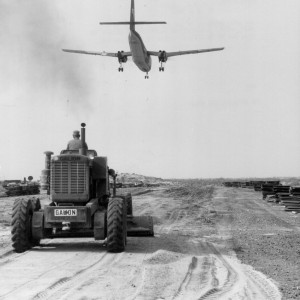
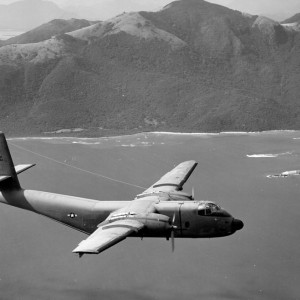
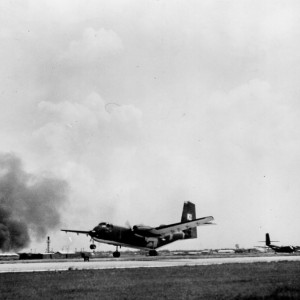
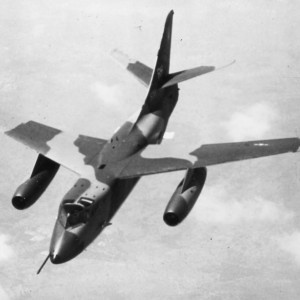
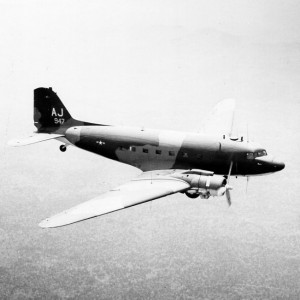
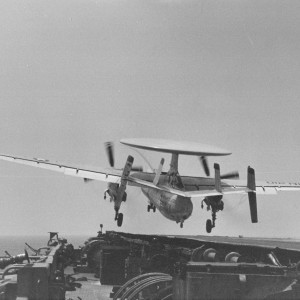
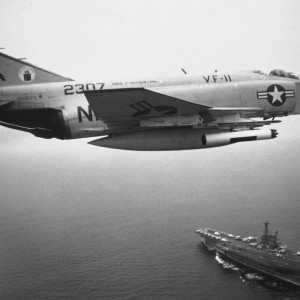
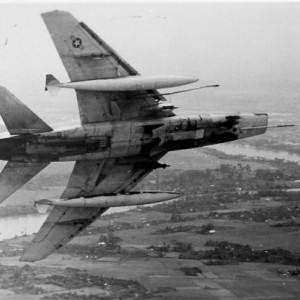
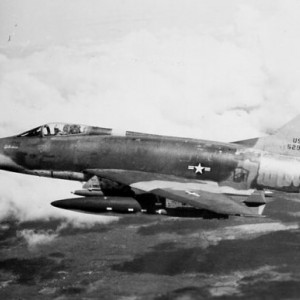
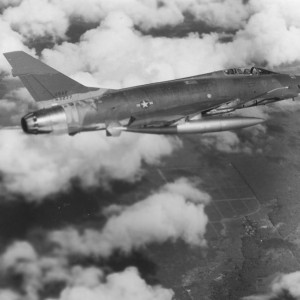
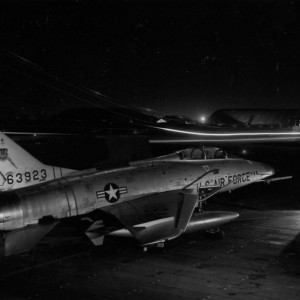
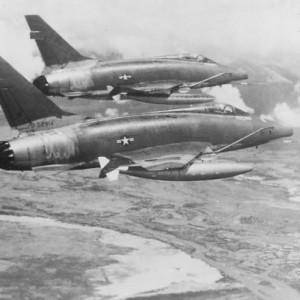
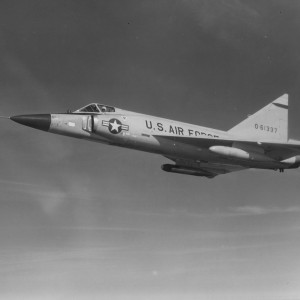
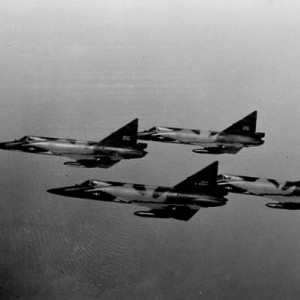
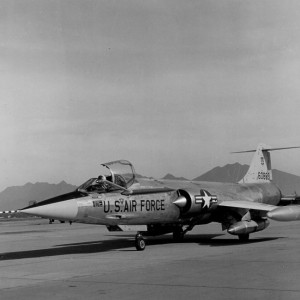
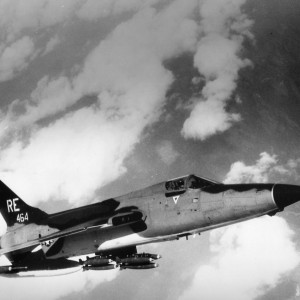
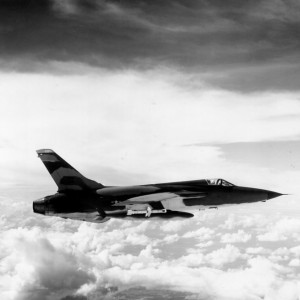
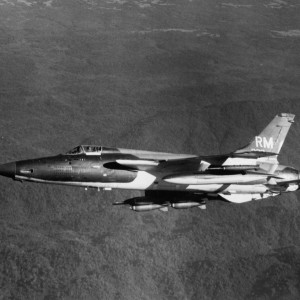
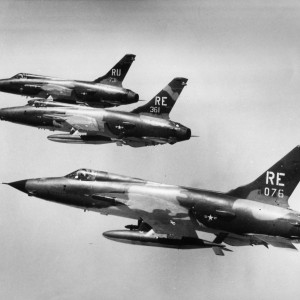
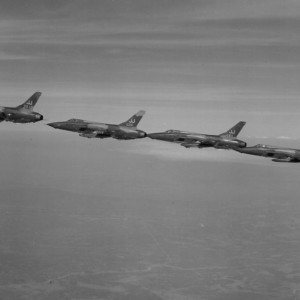

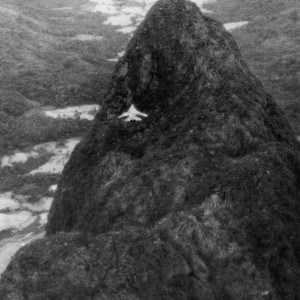
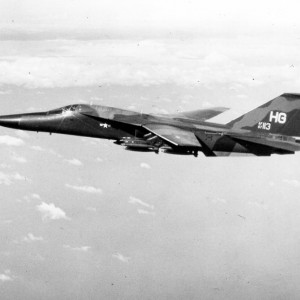
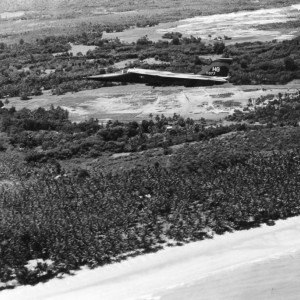
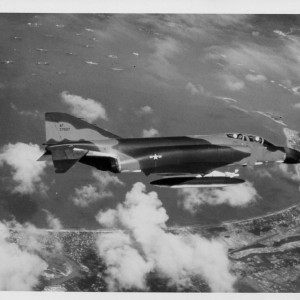
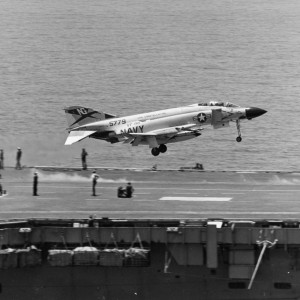
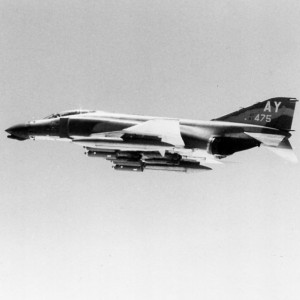
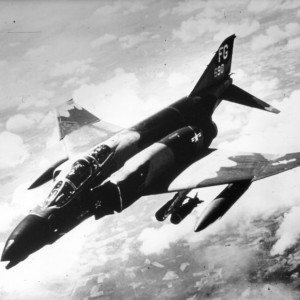
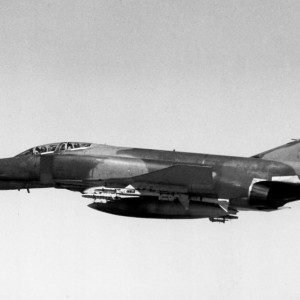
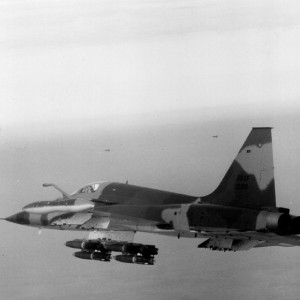
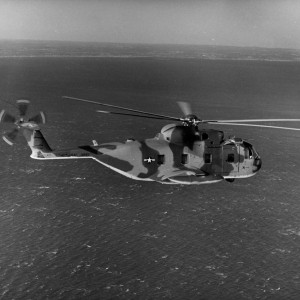
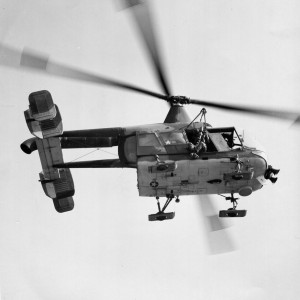
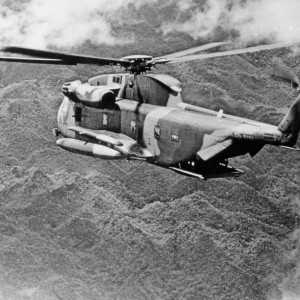
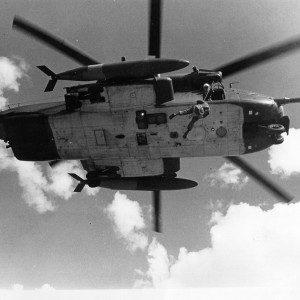
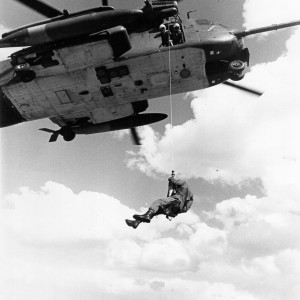

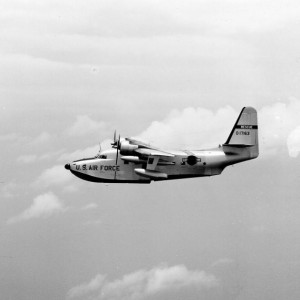
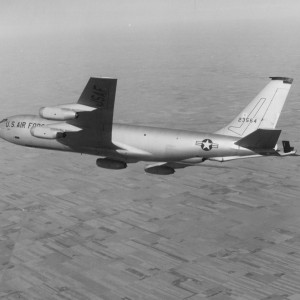
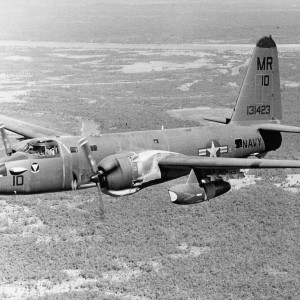
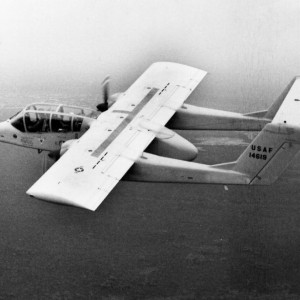
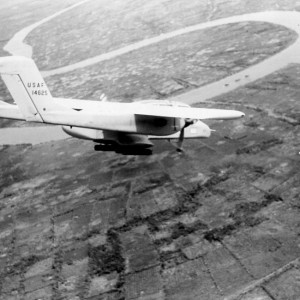
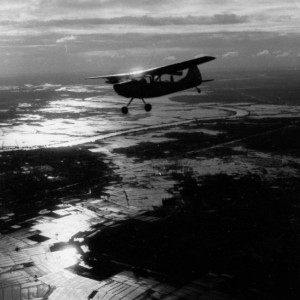
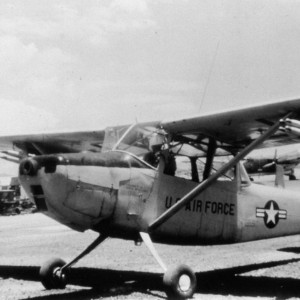
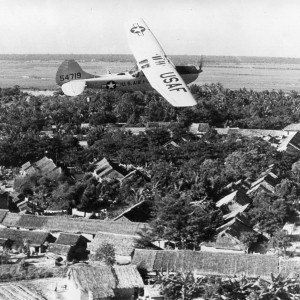
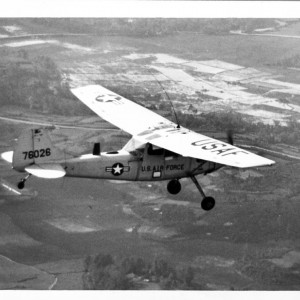
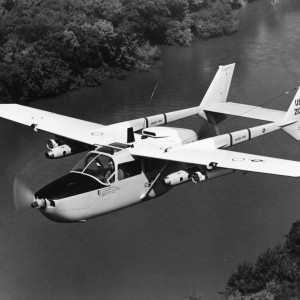
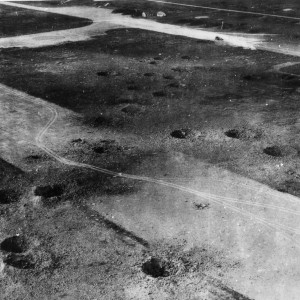
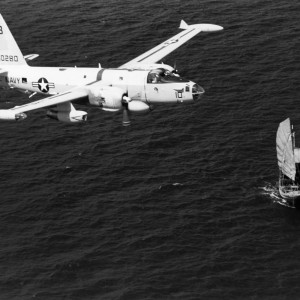
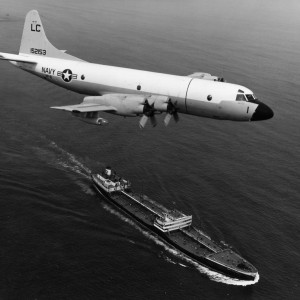
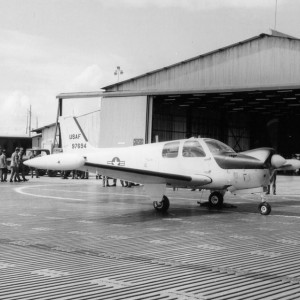
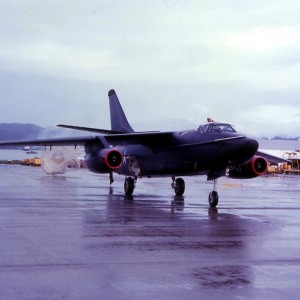
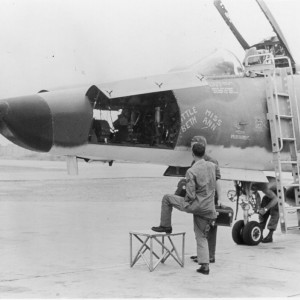
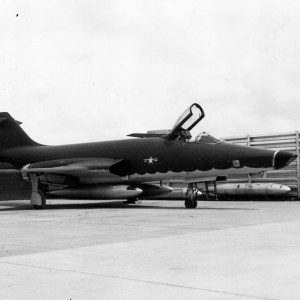
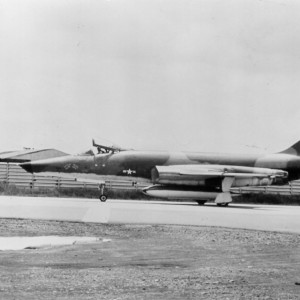
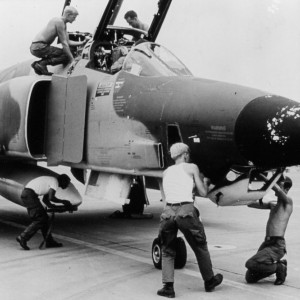
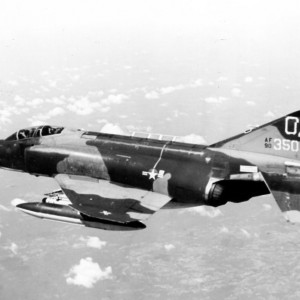
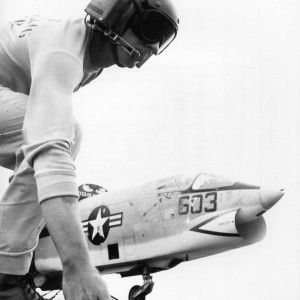
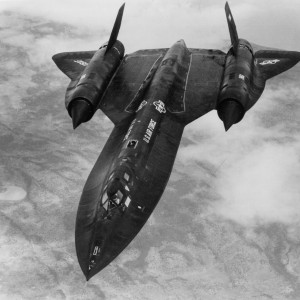
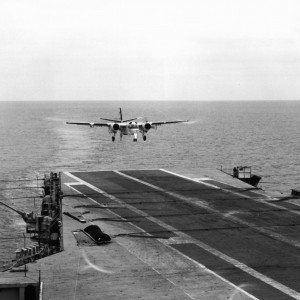
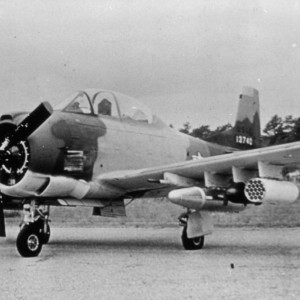
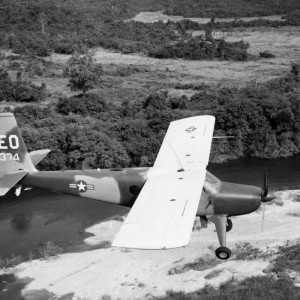
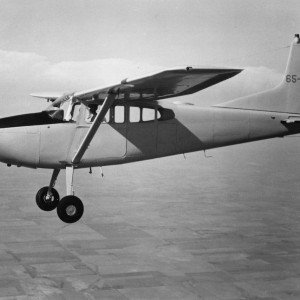
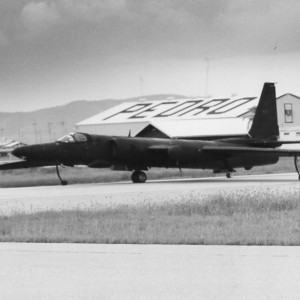
© Chris Hobson and David Lovelady. All rights reserved.




















































































